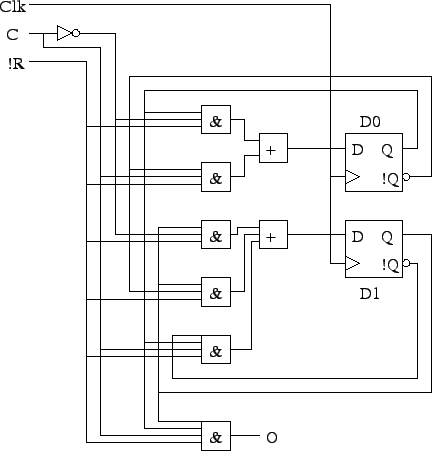
Tom Kelliher, CS 240
Apr. 7, 2010
Xilinx assignment due Friday.
Exam on 4/14, covering 4.1-5.2, including material covered in class on addition.
Read 5-5.
Flip-Flops and waveforms.
Sequential circuit design.
Analysis = reverse engineering.
One doesn't ordinarily do this, but doing so will help with sequential circuit design.
Consider the following sequential circuit:

What does it do -- high level?
What happens if we use !Q as the input to the NEXOR rather than Q?
Mealy (this circuit) vs. Moore machines.
What are the equations for O and D (input equation)?
Do these differ that much from anything we've already seen?
State tables are similar to truth tables, with two additions:
| Present State | I | Next State | O |
| 0 | 0 | 0 | 1 |
| 0 | 1 | 1 | 0 |
| 1 | 0 | 1 | 0 |
| 1 | 1 | 0 | 1 |
Conveys same information as state table, in a visual form.
State diagram for our example (Mealy):

How do I read this?
Moore machine example:

Determine input and output equations, state table, and state diagram for this circuit:

Is this Mealy or Moore?